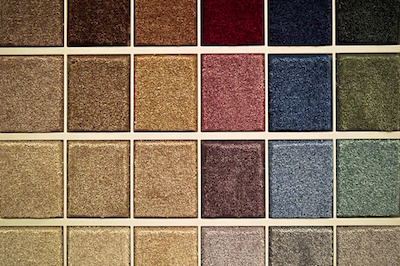Ever wondered what the carpet pad underneath your carpeting is made from?
Bonded urethane foam, also known as rebond, is the most common type of carpet padding on the market today.  Currently about 80 percent of padding sold is made from bonded foam, which is constructed of foam scraps left over from the manufacturing process of things like furniture, mattresses, even automobile components. In many cases, the scraps also come from scrap generated by the foam making process. It can include recycled and post-consumer foam.
Currently about 80 percent of padding sold is made from bonded foam, which is constructed of foam scraps left over from the manufacturing process of things like furniture, mattresses, even automobile components. In many cases, the scraps also come from scrap generated by the foam making process. It can include recycled and post-consumer foam.
Foam scraps and cut into small pieces before being fused together using either an adhesive or a heat process. The foam is then bonded to fabric, net or a plastic film to give the pad its strength. It also makes it easier to handle during the installation process.
Bonded urethane foam pads use a great deal of foam that would otherwise go to waste, making it an excellent choice for people wanting greener choices in the products they buy. Prices are also fairly low, given that the product is created from scrap and waste.
You’ll find bonded foam padding in different levels of thickness. The minimum standard for bonded urethane foam is 0.375 inch and 5 pounds per cubic foot for light to moderate traffic areas, with 6.5 pounds per cubic foot foam for heavy traffic areas. Many professionals and manufacturers will recommend up to 8 pounds per cubic feet to better protect your carpet, depending on usage. Be sure to check with your flooring specialist before making final decision.
Bonded foam pads are less likely to contain butylated hydroxytoluene (BHT) today than in the past. BHT was found to contribute to off-gassing which can impact your health. But to be sure, ask the seller to make sure your carpet padding is as green as possible.
Have other questions about carpet padding?
